Design Museum Collection App: chairs
Dezeen filmed a series of interviews with Design Museum director Deyan Sudjic about 59 objects from their collection for the Design Museum Collection App for iPad, which is available to download free from the app store here.
This film features extracts about the developments in chair design over the last 150 years, from the first mass produced Thonet No. 14 chair in the 1850s to the use of tubular steel as a material for furniture in the B3 (Wassily) chair in the 1920s, all the way to creating the shapes of Jasper Morrison's Air Chair using gas injection at the turn of this century.
You can listen to Sudjic talking about classic design for driving in our earlier movie and his explanation of the way design has changed the way we listen to music in another.
Download the Design Museum Collection App »
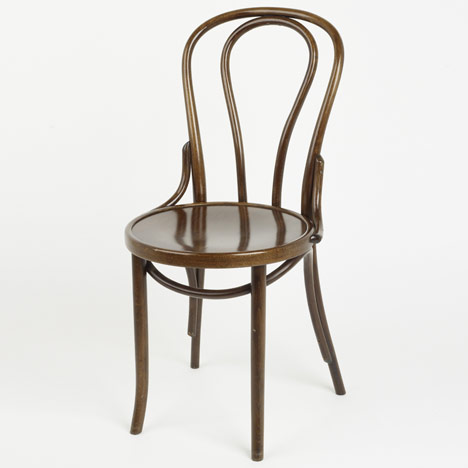
Here are some excerpts from the app:
Mould for Manufacturing Thonet No. 14 chairs
As techniques using steam bending evolved, Thonet was able to produce a chair from six pieces of wood, ten screws, two washers and some wicker for the seat. The resulting chair, the Thonet No. 14, became one of the first genuine consumer products and is often cited as the most successful industrial product of the nineteenth century. Several million had been manufactured by 1900. This mould for the chair is from the 1850s.
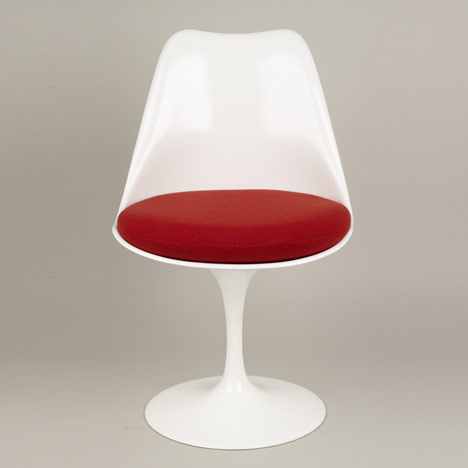
Tulip chair (model 150)
Designer of the chair, Eero Saarinen was fascinated by the potential of plastics, but the limitations of early fibreglass reinforced polyester thwarted his efforts to make the world’s first chair from a single moulded element.
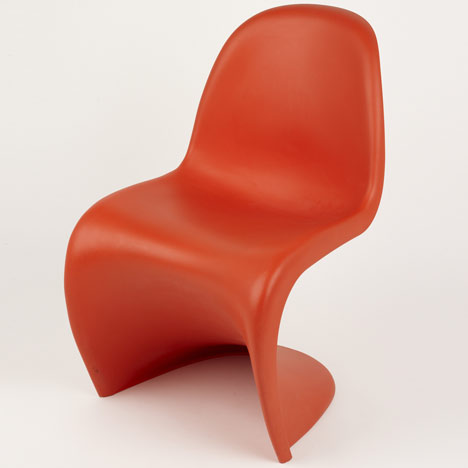
Panton Chair
Verner Panton was the first to succeed where others had failed, by producing a chair from a single element. Practical and comfortable, the cantilevered form is based on the same principles designers Marcel Breuer and Mies Van Der Rohe used in the 1920s. Early fibreglass versions were brittle and it was not until polypropylene was invented that a suitable material was found.
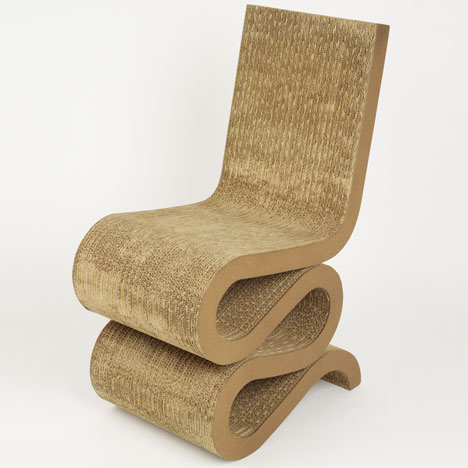
Wiggle Chair
Best known for his iconoclastic architecture in buildings such as the Guggenheim Museum, Bilbao and the Walt Disney Concert Hall in downtown Los Angeles, Frank Gehry has also experimented with furniture design throughout his career. One of his Easy Edges chairs, the Wiggle, 1972, is composed of 60 layers of cardboard bonded and screwed together. Gehry transformed an everyday material - the corrugated cardboard from which his architectural models were made - into a solid sculptural form. ‘I began to play with it, to glue it together and to cut it into shapes with a hand saw and a pocket knife,’ he recalled.
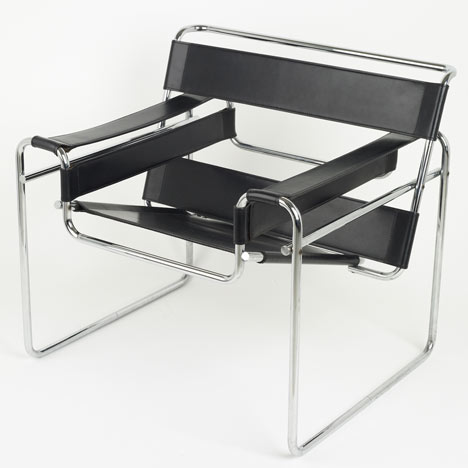
B3 (Wassily) chair
Obsessed by the challenge of designing a chair to be built in a factory like a Model T Ford car, Marcel Breuer concentrated on two goals as head of the Bauhaus carpentry workshop. One was to develop furniture from the same lightweight yet strong tubular steel as the Adler bicycle which he rode around Dessau. The other was to design a cantilever chair, or one supported by a single base. His experiments produced the angular B3 chair in 1925, which he nicknamed the ‘Wassily’ after his fellow tutor at the Bauhaus Wassily Kandinsky. Unfortunately for Breuer, the Dutch architect Mart Stam (1899-1986) completed the first cantilever chair before him by making the 1926 Model No. S33 from gas pipes.
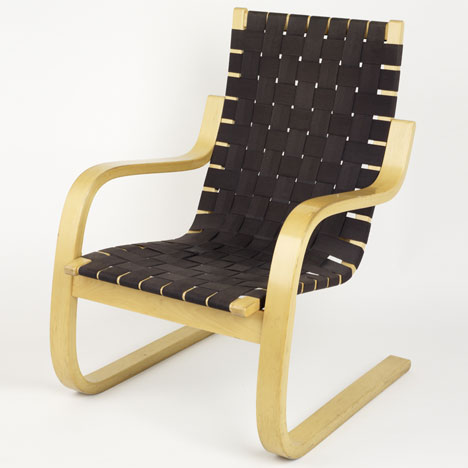
Chair no. 406
Conceived as a variation on Alvar Aalto’s earlier laminated wood cantilevered armchair, Chair No. 406 was designed at the same time as Aalto was working on the Finnish Pavilion for the 1939 New York World’s Fair and Villa Mairea, a house for the industrialist Harry Gullichsen and his wife Maire. A few years earlier Aalto had co- founded Artek, the furniture manufacturer, with Maire Gullichsen and his own wife Aino. Based in Helsinki, Artek produced many of Aaalto’s furniture designs and continues to manufacture them today.
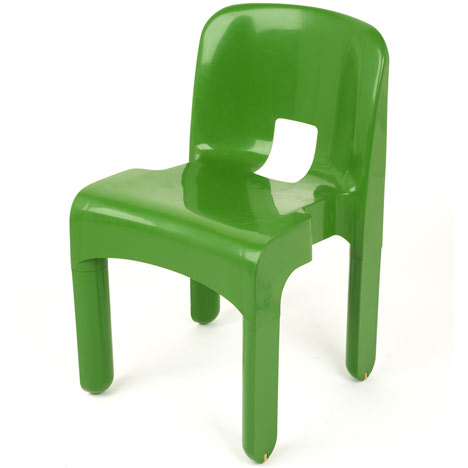
Universale
Originally an artist, Joe Colombo opened a design studio in Milan in 1962 to apply the bold, curvaceous forms – and hatred of sharp corners and straight lines – that had characterised his art to product design. He also strove to apply new technologies to develop new types of furniture. Obsessed by making a chair from a single piece of material, Colombo first tried to develop the Universale stacking chair in aluminium, but then experimented with ABS plastic. Light, portable and easy to clean, the Universale is also adjustable as its legs can be unscrewed and replaced with longer ones. Colombo strove for two years to perfect it for mass production.
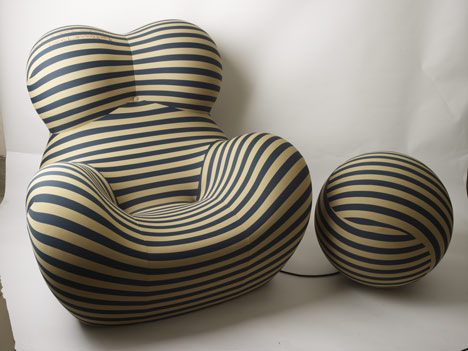
Donna Up5 and Up6
The Donna Up5 was regarded as uncompromisingly radical when it was unveiled by the avant-garde Italian architect Gaetano Pesce (1939-) in 1969. Pesce designed it as part of a new series of vacuum sealed upholstered furniture which could be bought in as a flat pack and literally sprang to life once the vacuum seal was broken. Described by Pesce as ‘transformation furniture’, each Up piece is compressed to a tenth of its full size when vacuum-packed in PVC before expanding to its full size after the pack is opened. The Up5 became unexpectedly popular in the UK when it was featured as the diary room chair in the 2002 series of the reality TV show Big Brother.
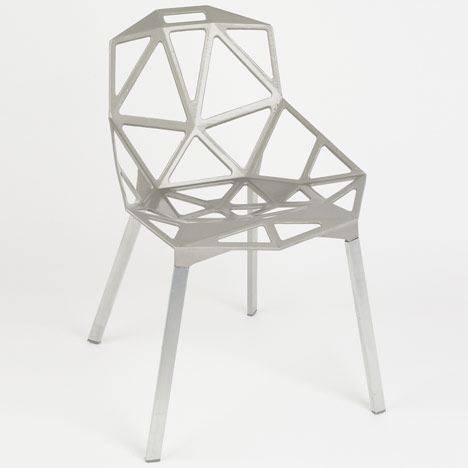
chair_ONE (above)
Konstantin Grcic’s furniture and lighting designs from the 1990s were informed by pared down purism and technically rigorous forms suited to their function. Yet Munich born and based Grcic has, in recent years, embraced a more expressive element in his work – defining function in more emotional terms, combining formal strictness with wit and subtlety.
Intent on creating deliberately ‘strange’ and open forms through advances in computer design software, Grcic started to experiment with shapes that were defined by how the object would be used, rather than by expectations of how they should look, or the technical conventions of craftsmanship. The results, such as the 2002 Chair_ONE, are blunt in style, with irregular planes jutting at unexpected angles.
Grcic’s starting point for the Chair_ONE was the everyday football – a collection of small, flat planes assembled at angles to create a three-dimensional form. By die- casting the chair from aluminium – a process rarely used before in furniture manufacture that involves casting liquid aluminium alloys into metal moulds using gravity, low pressure and high pressure – Grcic was able to produce the complex skeletal one piece seat and back in a cost effective method with minimal machining.
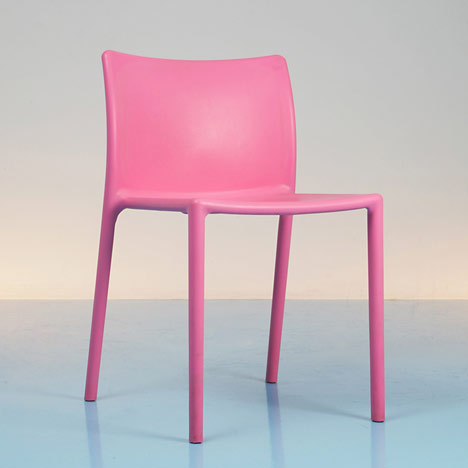
Air-Chair
British designer Jasper Morrison began work on his stackable 1999 Air-Chair when Alberto Perazza, the owner of Magis, showed him a length of tube made by gas injection. ‘The design began from the leg up, describing the tubular structure of a chair to which a thin skin is applied for the seat and back, in much the same way as the earlier Plywood Chair uses a thicker plywood for the structure and a thinner plywood for the seat,’ recalled Morrison.
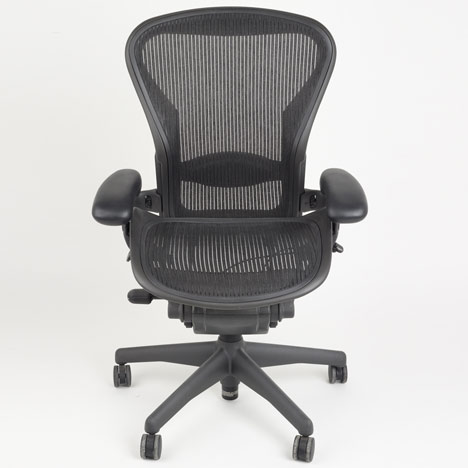
Aeron
In the early 1990s, the Aeron office chair was the first seat to address the changing shape of the American workforce with its easily adjustable, thanks to a mechanism found under the seat, optimisation for a variety of users. Designed to an ergonomic standard previously unseen, the chair commanded a huge price. This exclusivity, combined with its ubiquitous presence in expensive offices, helped it to become an emblem for the dot.com boom of the late 1990s.
The Design Museum Collection
The Design Museum Collection is made up by over 2000 objects that range from the early Modernism of the 1900s to the cutting edge of contemporary design. The Collection tells the history of design in mass production and includes furniture, lighting, domestic appliances and communications technology. The Collection is an important record of the key designs which have shaped the modern world.